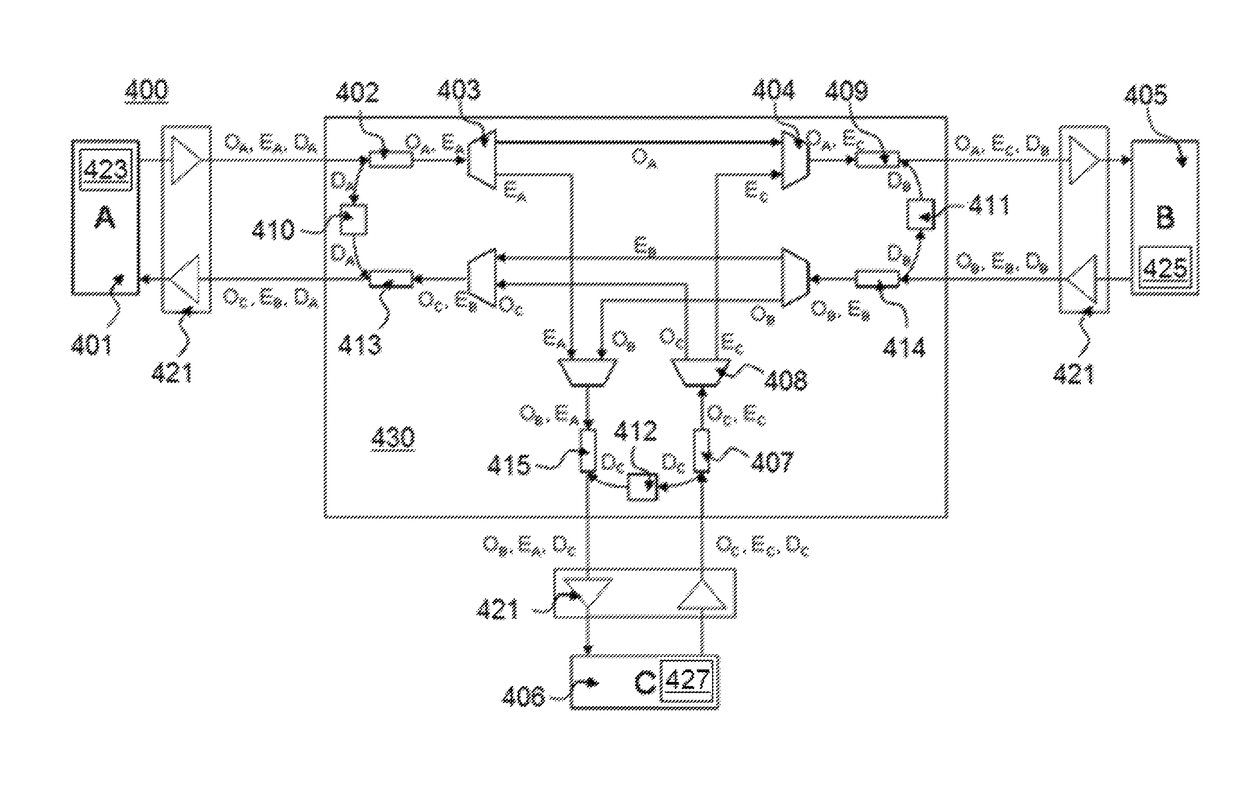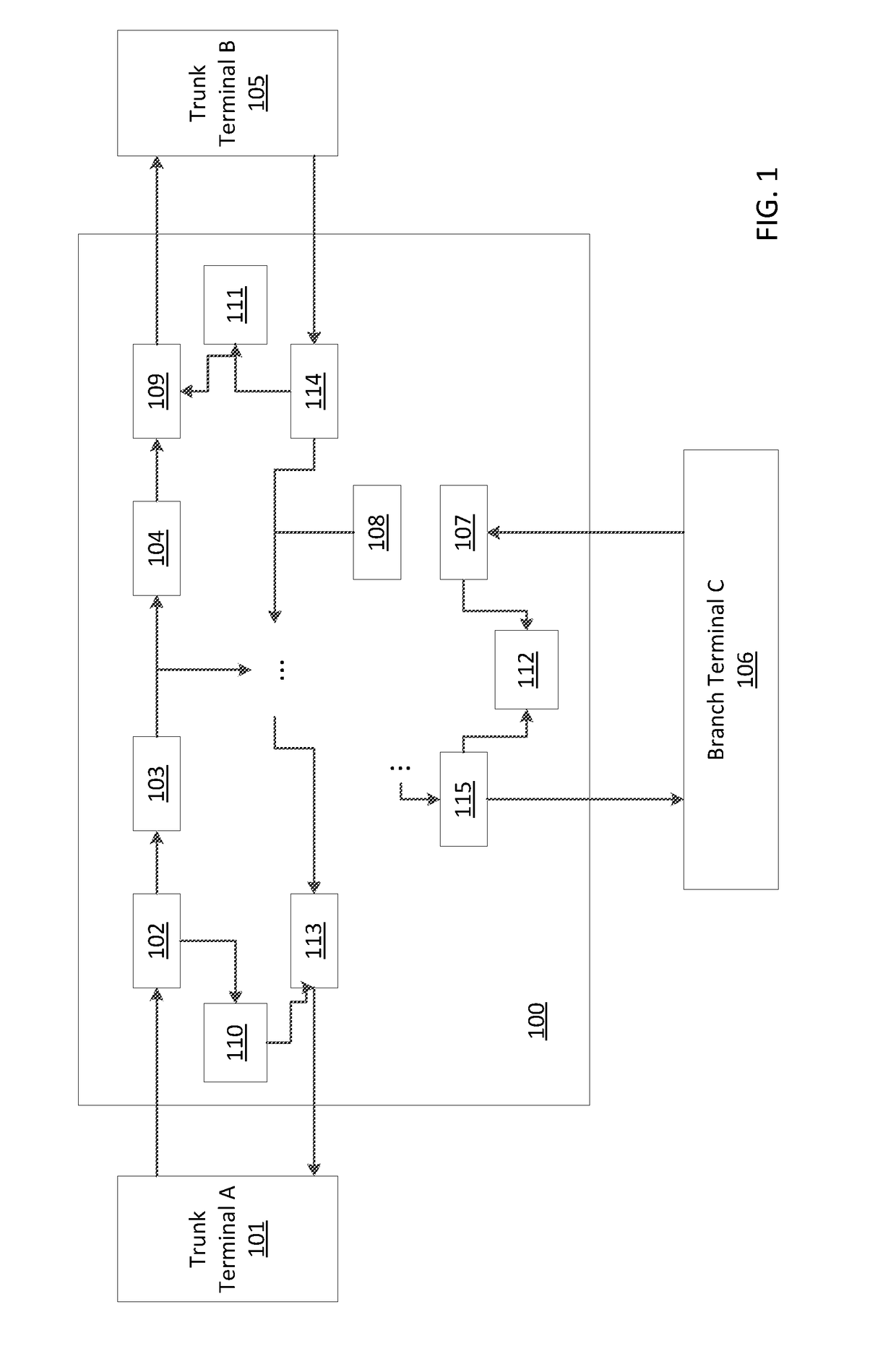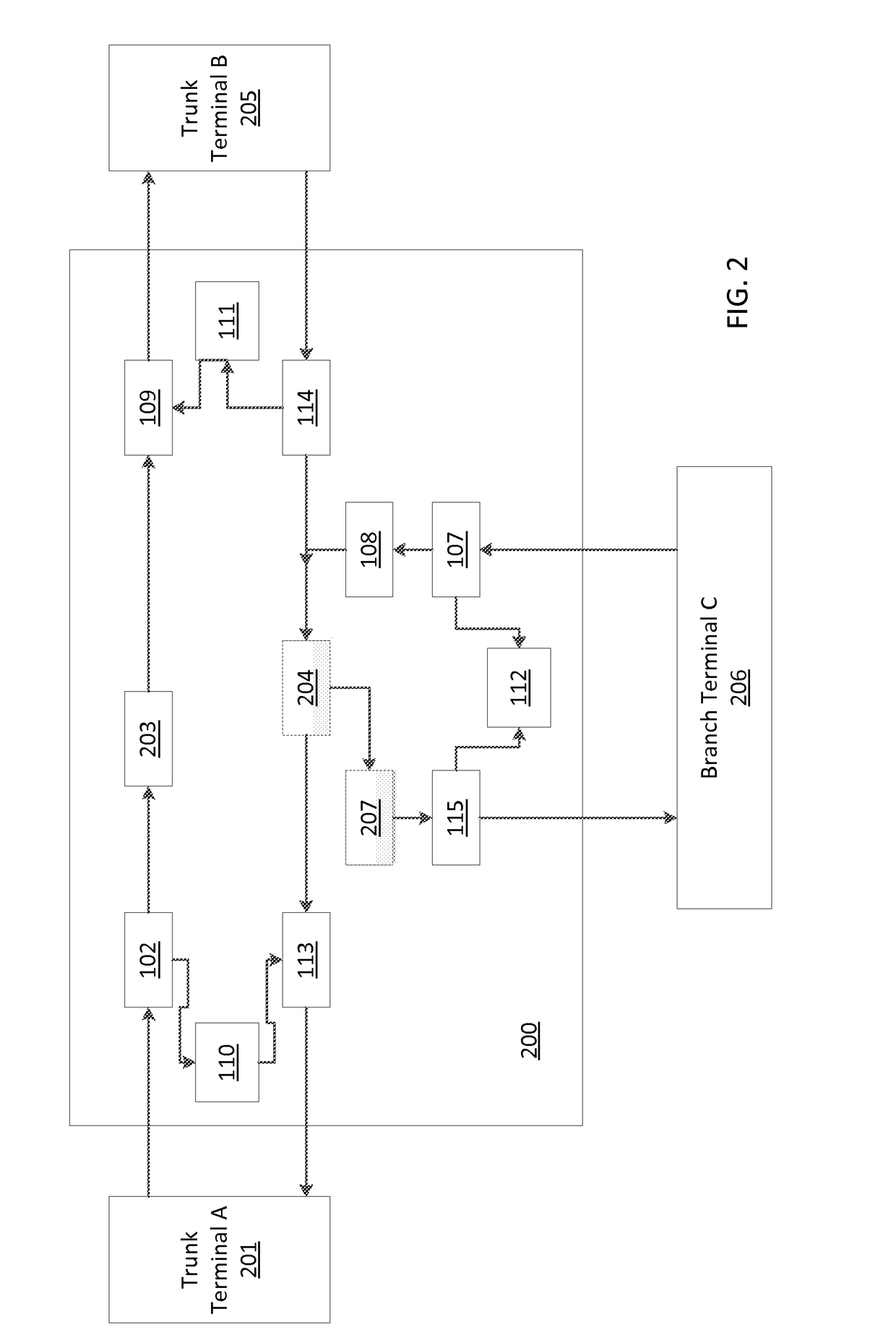Submarine reconfigurable optical add/drop multiplexer with passive branching unit
a reconfigurable, multi-channel technology, applied in multiplex communication, electrical equipment, multiplex systems, etc., can solve the problems of increasing complexity of the bu, increasing the volume of the bu, and increasing the dynamic of the global communication network
- Summary
- Abstract
- Description
- Claims
- Application Information
AI Technical Summary
Benefits of technology
Problems solved by technology
Method used
Image
Examples
case 1
[0107] Trunk Heavy
[0108]In most submarine networks, the main trunks have more traffic than the branch paths. In other words, the traffic from a trunk terminal to a branch terminal does not exceed half of the channel capacity in the WDM system. For example, in a 40-channel WDM system, the traffic between a trunk terminal (such as A) and branch terminal (such as C) will not exceed 20 channels. We can further divide this case into two subcases.
[0109]In the first subcase, the main trunks are fully occupied with useful WDM channels (for example, at the output of Trunk Terminal A, all WDM channels are present, and each one either goes to Trunk Terminal B 405 or to Branch Terminal C 406.). In fact, most of the existing BU architectures published so far assume this condition.
[0110]Under such condition, no dummy channel is required on the main trunk, therefore the dummy light filters (402, 413, 409, and 415) and the optical attenuator (410 and 411) at each trunk input / output of the BU 430 ca...
case 2
[0114] Asymmetric Branch Heavy
[0115]In one embodiment, as the submarine network traffic patterns becoming more dynamic, it is possible that some branch might have heavier load. In other words, the traffic between a trunk terminal and the branch might be more than the traffic between this trunk terminal and the other trunk terminal (such as AC traffic exceeds AB traffic), and might be more than half of the WDM channel capacity.
[0116]In such case, the two simplified architectures cannot be used. The two full architectures described above, however, can support such a case. Among them, the proposed architectures again show significant dummy light saving.
[0117]As discussed earlier, the 2 previously described architectures can be used for more general network arrangements than any conventional systems. Since they may not have a distinction between trunk and branch terminals, any traffic load balance setting among the terminals and the transmission links can be handled efficiently.
[0118]It...
PUM
 Login to View More
Login to View More Abstract
Description
Claims
Application Information
 Login to View More
Login to View More - R&D
- Intellectual Property
- Life Sciences
- Materials
- Tech Scout
- Unparalleled Data Quality
- Higher Quality Content
- 60% Fewer Hallucinations
Browse by: Latest US Patents, China's latest patents, Technical Efficacy Thesaurus, Application Domain, Technology Topic, Popular Technical Reports.
© 2025 PatSnap. All rights reserved.Legal|Privacy policy|Modern Slavery Act Transparency Statement|Sitemap|About US| Contact US: help@patsnap.com



